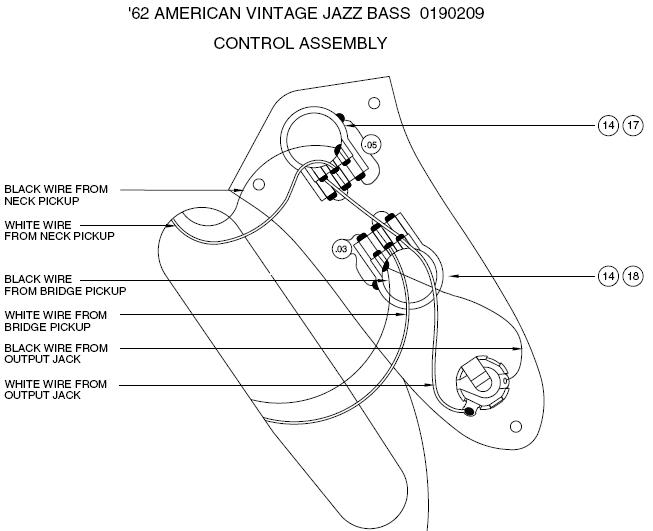pjmuck wrote:
Can you post a link?
One disadvantage I've encountered is sometimes when you turn either the upper or lower knob, the other knob will turn with it, so you have to carefully adjust the knobs on the concentric pot so they're not too close and touching one another.
As for advantages, the obvious being independent volume and tone control over each PUP, I was discussing this with Don at Stellartone, who makes various cool aftermarket tone pots for bass, (I purchased his P bass Tonestyler Eleven. A very cool P bass mod) and he reiterated the following, which also is on his website:
"In 1960, Fender's first-generation Jazz Bass featured two stacked dual-concentric knobs, and each pickup was correctly-wired "pre-volume" to separate tone circuits. But, in 1963, Fender introduced a long-standing signal flow error by replacing the two stacked-knob "pre-volume" tone circuits with one simpler (and less costly) tone pot, improperly-wired "post-volumes".
The resulting sonic flaw is unnoticeable while one or both volumes are set on maximum. However, if both volumes are set below maximum, an adverse interaction occurs: the "post-volume" tone pot now controls the cable and the amp, not the pickups! This creates a dull, muddy tone, and loss of signal strength.
[i]"In 1960, Fender's first-generation Jazz Bass featured two stacked dual-concentric knobs, and each pickup was correctly-wired "pre-volume" to separate tone circuits. But, in 1963, Fender introduced a long-standing signal flow error by replacing the two stacked-knob "pre-volume" tone circuits with one simpler (and less costly) tone pot, improperly-wired "post-volumes".
The resulting sonic flaw is unnoticeable while one or both volumes are set on maximum. However, if both volumes are set below maximum, an adverse interaction occurs: the "post-volume" tone pot now controls the cable and the amp, not the pickups! This creates a dull, muddy tone, and loss of signal strength.
The CTS Dual-Tone Pot economically solves this problem by properly-controlling each pickup "pre-volume", via two separate tone circuits. Dual electrically-independent tone pots are mechanically-stacked in tandem, and operated at the same time using one common actuator shaft & knob. This allows two tone pots in the space of one. Volume adjustments now have zero adverse effect on the pre-set tones. Because the Dual-Tone Pot re-uses the original Fender tone knob, the appearance is unchanged.
Use a pair of .047µF tone caps to maintain the original tone pot's range... finally without any muddiness or signal loss when volumes are reduced! You may also expand the tonal range of your J-Bass by using a lower-frequency .1µF tone cap for the neck pickup, and a higher-frequency .022µF tone cap for the bridge pickup."
So yeah, a good upgrade from the standard 3 knob Vol/Vol/Tone setup of today's J, but are the pots lefties? If not, your taper's not likely to act as it should with gradual sweeps. I've heard audio pots are a great option for lefties too though.






